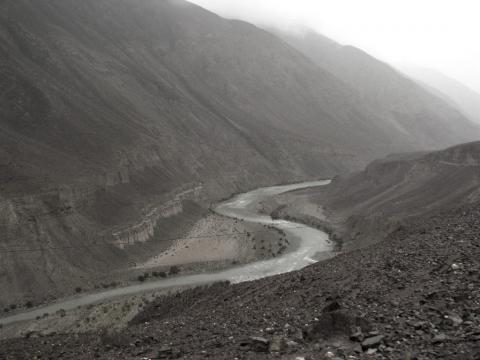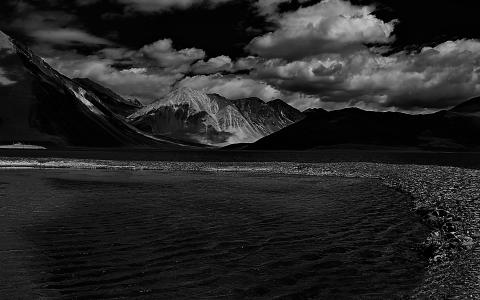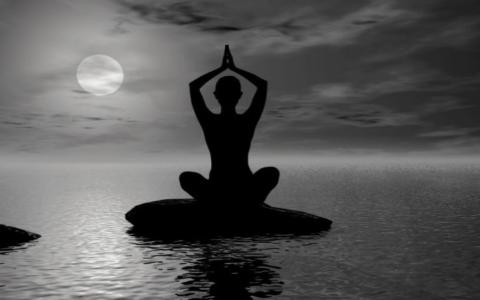
Once we say that it is not wrong but only fit and proper to experience pleasure, we have to make all arrangements to obtain it. Sustaining the family, earning a salary for their comfort, taking loans in case there are emergencies and repaying them, giving and taking help, struggling thus in many ways become the duty of a householder.
Śrī Śankarācārya’s instruction is thus –
yogarato vā bhogarato vā saṅgarato vā saṅgavihīnaḥ
yasya brahmaṇi...

Selfless Karma
Who should follow the principle of not wanting results for one’s duties? Those who are seeking mokṣa. How many of us are wishing for mokṣa? Surely, the number of people wishing for material things vastly exceeds that. We all desire something or the other. They may all be noble desires. For instance, those indulging in wrongdoing must be destroyed; we as a country should grow our own food; we have to establish ourselves well in the...

Arjuna is hasty. Initially, he was eager to fight. Then, he was eager to give up fighting. Vikarma is the result of this haste. Therefore, the following is said about those who deduce the nature of dharma -
yuktā āyuktāḥ
alūkṣā dharmakāmāḥ syuḥ
yathā te tatra varteran
tathā tatra vartethāḥ
Those who are skillful and experienced, not harsh, and practise dharma constantly, as they behave (during times of doubt), so too you shall.
—...

Why is Dharma Worthy of Worship?
Dharma is established and nurtured by the divine. Bhagavān who needs to have no thought for anything else thinks of dharma alone and of his own volition. This should bring the greatness of dharma to our minds. Dharma is Īśvara’s own property. Therefore, it is immensely worthy of our worship. We have to always remember that Īśvara is watching us all the time. An American poet says thus:
Though the mills of God...

The Antiquity of Karma-vidyā
“Arjuna, what I am explaining to you now is not something new and contemporary. It is something that I had explained to the sun named Vivasvān at the beginning of creation. He, in turn, taught this to Manu, the progenitor of the human race. Manu then gave the same upadeśa to Ikṣvāku, the foremost among kings. Thus, this knowledge of karma has been passed on through many generations. Earlier, many king-sages like...

Note
vivarisidenidāṃ pūrvadi
vivasvataṃgeṃdu Kṛṣṇanoreyal Pārthaṃ।
avatāraṃgaḻadeṃtene
svavapurdhṛti dharmarakṣegeṃdaṃ devaṃ॥
Said Kṛṣṇa to Arjuna “Long ago
To Vivasvān, this knowledge I had bestowed”.
When Arjuna wondered how it was possible,
He said his incarnations were to protect dharma.
karmamanivāryamāguṃ
nirmamateyināda karmamīśaprītaṃ ।
karmamayaṃ jagamellaṃ
dharmaṃ brahmaprabhāvameṃdaṃ Kṛṣṇaṃ ॥
Inescapable, Karma is; performed...

Why only Svadharma?
"One’s own karma performed diligently, even though it may not be the best thing, is better than others’ karma performed in a most satisfying manner". What then is svadharma?
Certain qualities, powers, propensities, and enthusiasm come to some people naturally. Using such qualities, that mindset and those internal faculties for the benefit of the world is dharma.
Then, should he be tied to his natural talents? Why should he...

Human nature is composed of the triad of guṇas – sattva, rajas, and tamas. It is true of the universe also. A man’s inner nature influences his outward behaviour and vice-versa. The essence of graha-atigraha mentioned in the Bṛhadāraṇyaka-upaniṣad is this mutual impulse.
tattvavit-tu mahābāho guṇa-karma-vibhāgayoḥ ।
guṇā guṇeṣu vartanta iti mattvā na sajjate ॥ (BG 3.28)
One who knows the principle of distribution of natural temperaments (...

There is another thing to consider. Illustrious people such as Janaka, who are greater than you have all performed karma much before you.
karmaṇaiva hi saṃsiddhim āsthitā janakādayaḥ।
loka-saṅgraham-evāpi saṃpaśyan kartum-arhasi ॥ BG 3.20
“Janaka and others attained fulfilment by karma only; You should also perform your duty keeping the welfare of the world in mind”.
Janaka was a great and elevated soul. Many ṛṣis would send seekers...
Who are devas? Various pictures of divine beings holding a trident, staff, rope, or discus might arise in our minds. These pictures are useful elsewhere; they can assist in meditation. When we are studying philosophy, devas are the powers of creation and nature – great powers of various kinds. The relationship between humans and these superhuman deities may not be directly observable to us. But it cannot be said that they do not exist just...
